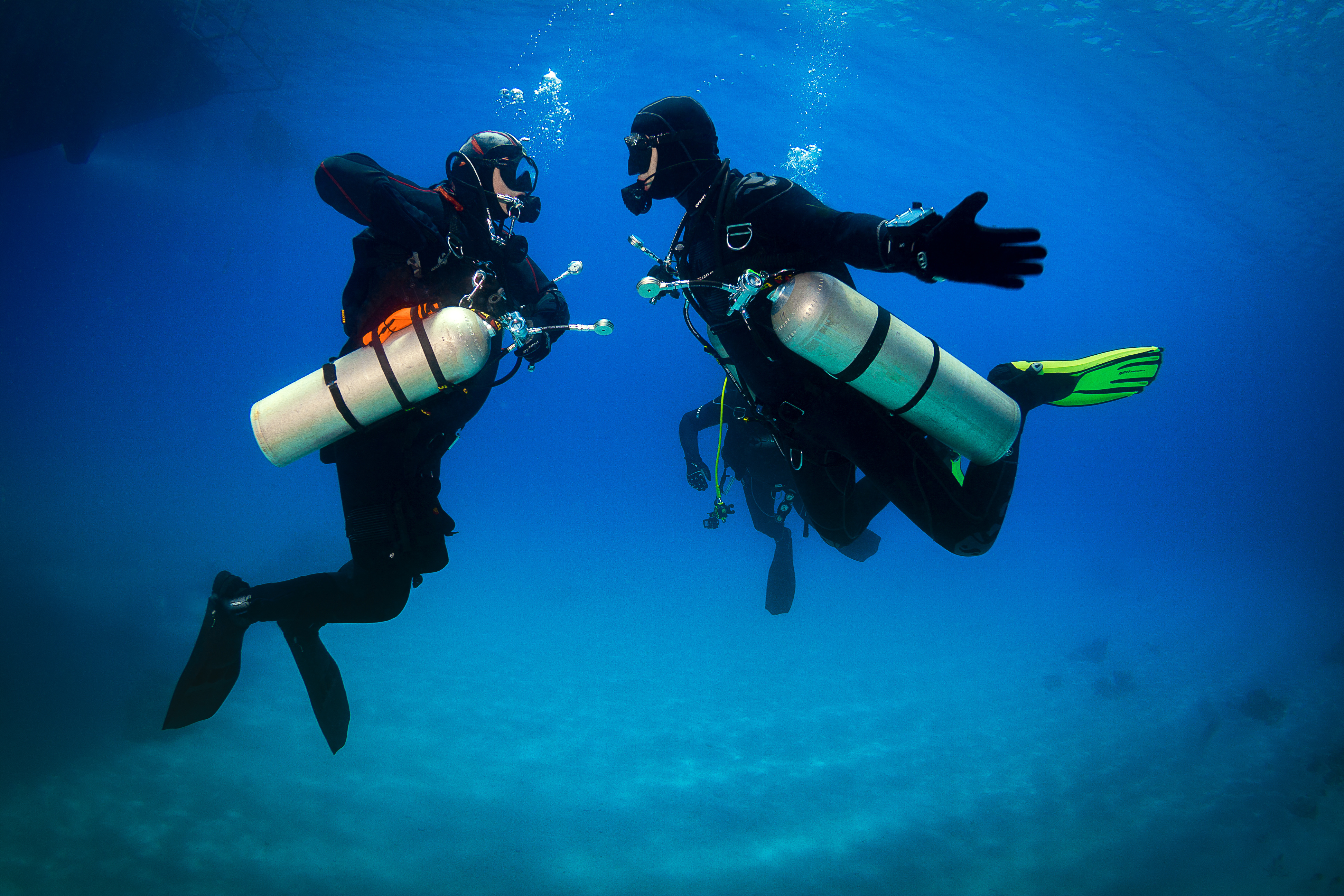 We highly recommend getting in touch with your local dive shop if you are interested in trying sidemount diving. Sidemount is becoming so mainstream that dive shops are often offering “Try Sidemount” events at their training pools for a minimal cost. It’s a great way to try it out and see if the configuration suits you, without investing a lot of money into a course. When you fall in love with sidemount, then sign up with the shop’s Sidemount Diving Course, and within only a few dives, you and your new sidemount buddies will be exploring the underwater world a whole new way.
We highly recommend getting in touch with your local dive shop if you are interested in trying sidemount diving. Sidemount is becoming so mainstream that dive shops are often offering “Try Sidemount” events at their training pools for a minimal cost. It’s a great way to try it out and see if the configuration suits you, without investing a lot of money into a course. When you fall in love with sidemount, then sign up with the shop’s Sidemount Diving Course, and within only a few dives, you and your new sidemount buddies will be exploring the underwater world a whole new way.
We are finding more and more resorts and liveaboards becoming educated on sidemount diving and are adapting to the requests of divers wanting to dive this style. Emperor Divers operates throughout the Red Sea at various resorts as well as operating a fleet of liveaboards. They offer sidemount scuba diving courses and safaris, including all necessary rental gear for a reasonable price. Atmosphere Resort in the Philippines is another great destination offering sidemount courses.
Traditionally used by cave, wreck and technical divers, sidemount diving is essentially a style of equipment configuration. Quickly becoming an increasingly popular venture for recreational divers, sidemount has gained popularity due to the ability to allow divers to be more streamlined in the water than the traditional single tank back mount style. Sidemount diving uses 2 separate tanks that are clipped using D-rings at the diver’s armpits that then dangle down by the hips. The tanks can be easily detached from the hips of the diver and maneuvered to the front (still attached at the armpit) in order to fit through smaller entrances, which has always appealed to advanced cave divers and wreck penetration divers.
Recreational divers who have suffered back problems will great benefit from sidemount’s unique positioning and equipment procedures. Generally, a sidemount diver will set up their tanks and regulators and leave them waiting at the water’s edge. They then suit up into their exposure suits, and BCD and walk to the water, essentially weight-free to meet up with the tanks, where they are then donned in the water. The weight of the tank is never left to solely your back muscles.
Sidemount is also considered a safer diving configuration to the properly trained diver, as you are always equipped with 2 tanks on every dive, each with their own redundant gas supply, and regulator.
Another benefit is the ability to see the first stage of the regulator in front of you. Gone are the days when a buddy has be relied on to turn on your gas supply, since everything is accessible in front of you. You are able to turn on and off your own gas supply, and you can also see bubbles leaking from the first stage if there is a problem. Newer divers will revel in the fact that sidemount makes it easier to stay horizontal in the water column with better streamlining of all your equipment.
A special BCD is required for sidemount diving. There are BCD options out there that are convertible from the traditional backmount to sidemount system, which offer a lot of flexibility to those wanting to dive both styles frequently but not wanting to invest in separate systems. Although the benefit to a sidemount only system is that it is highly customizable.







